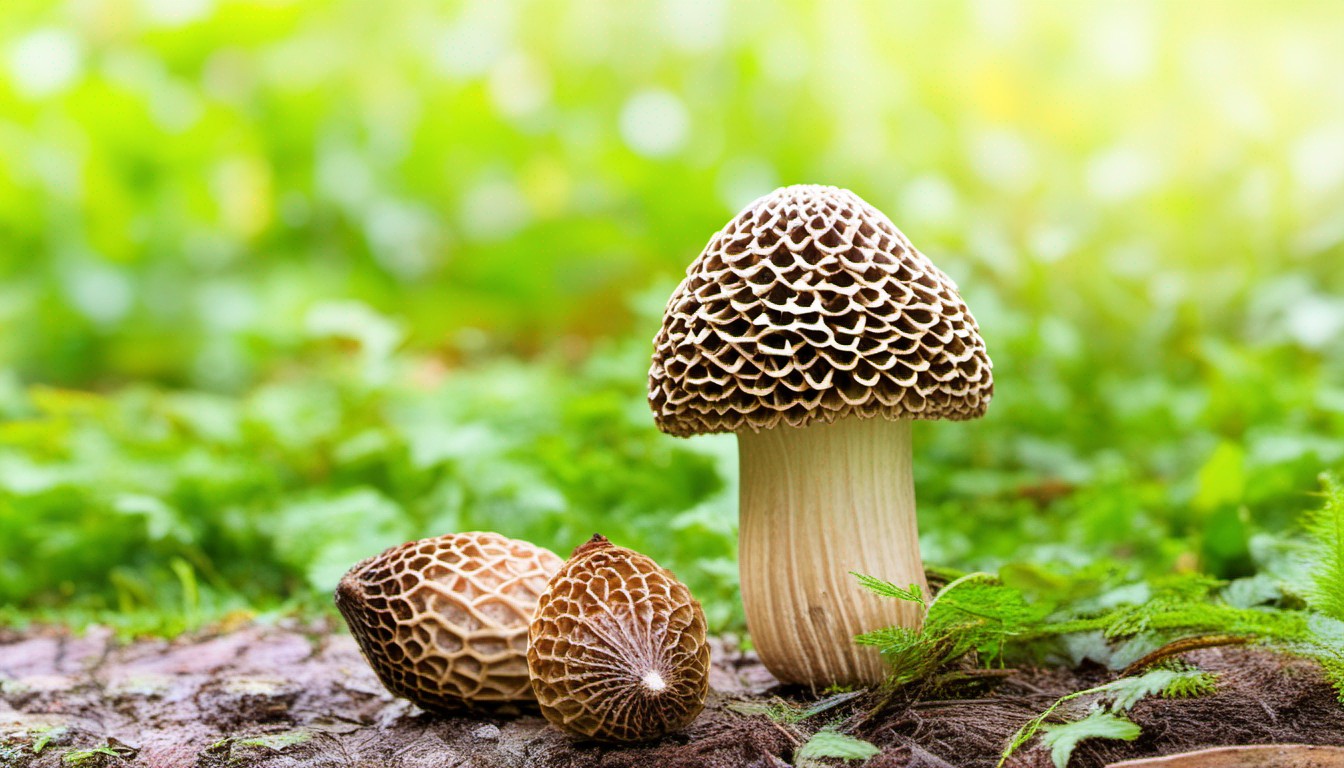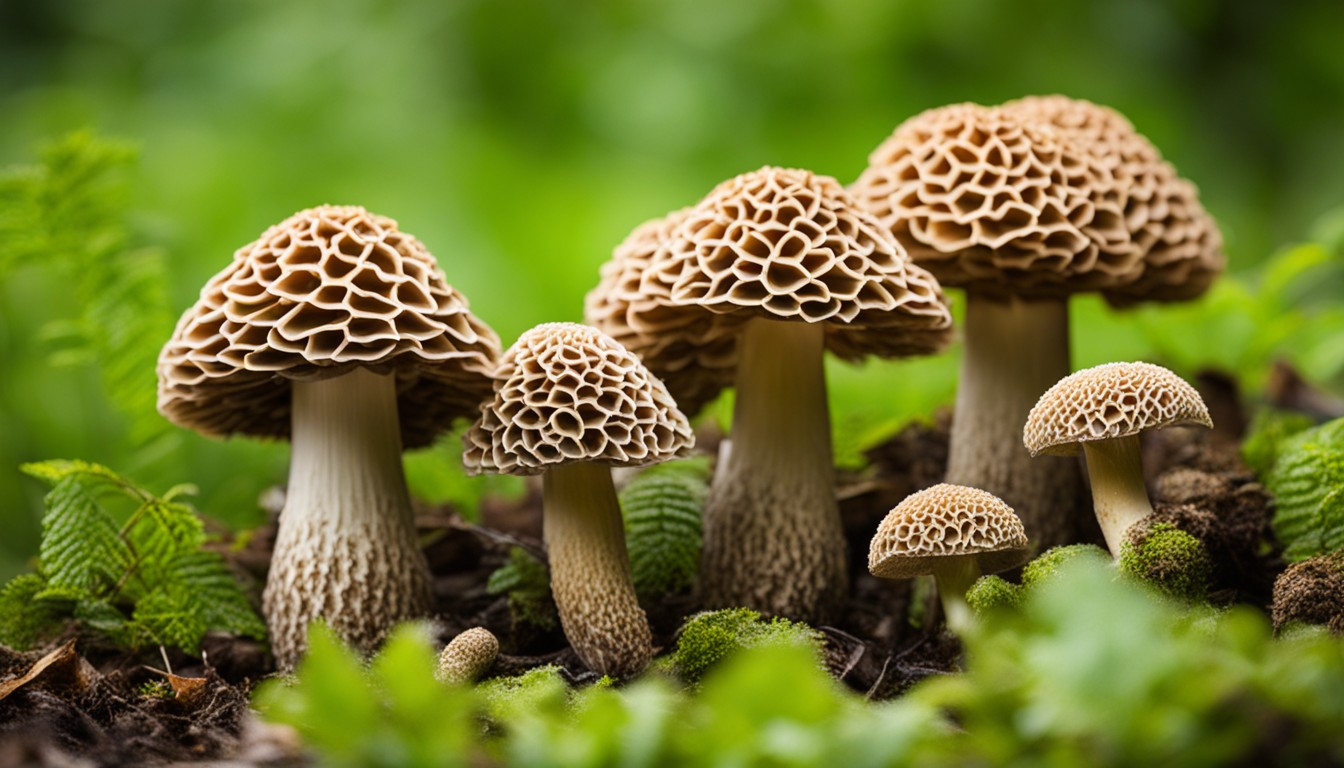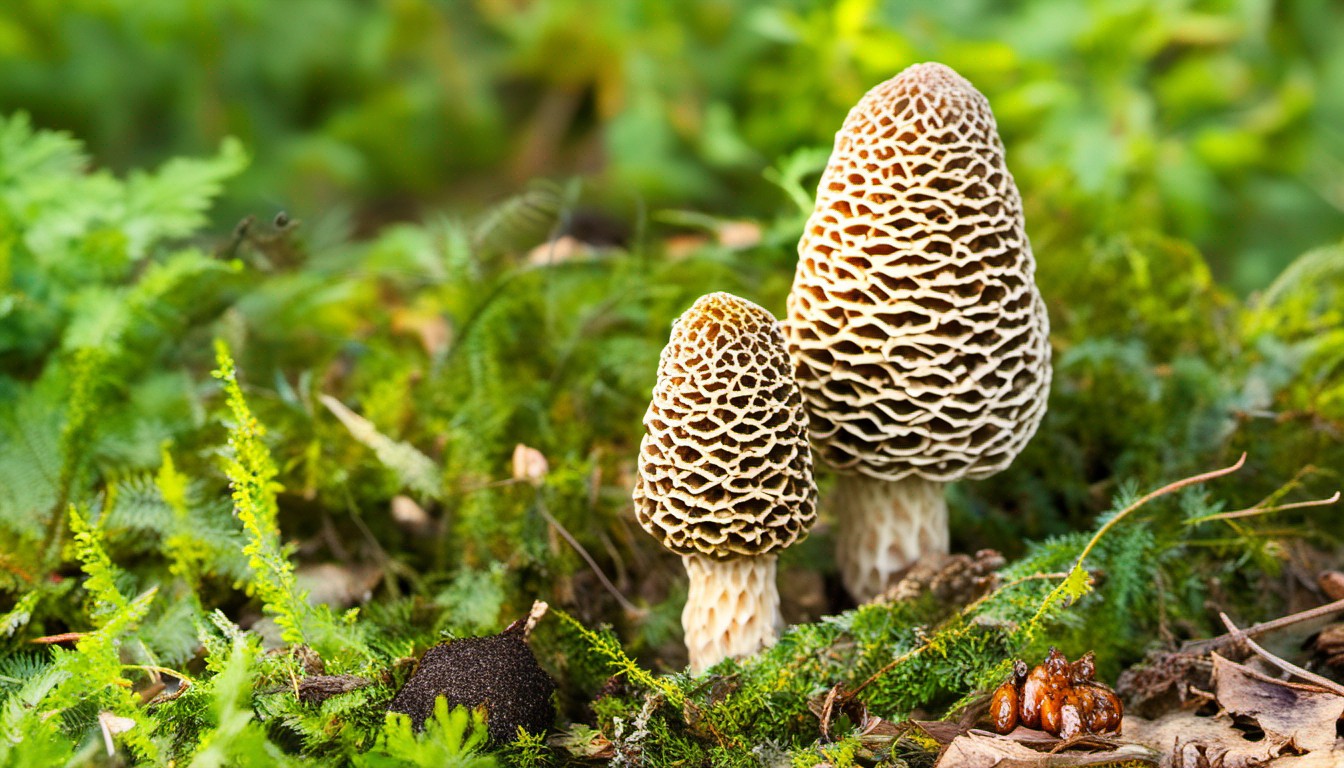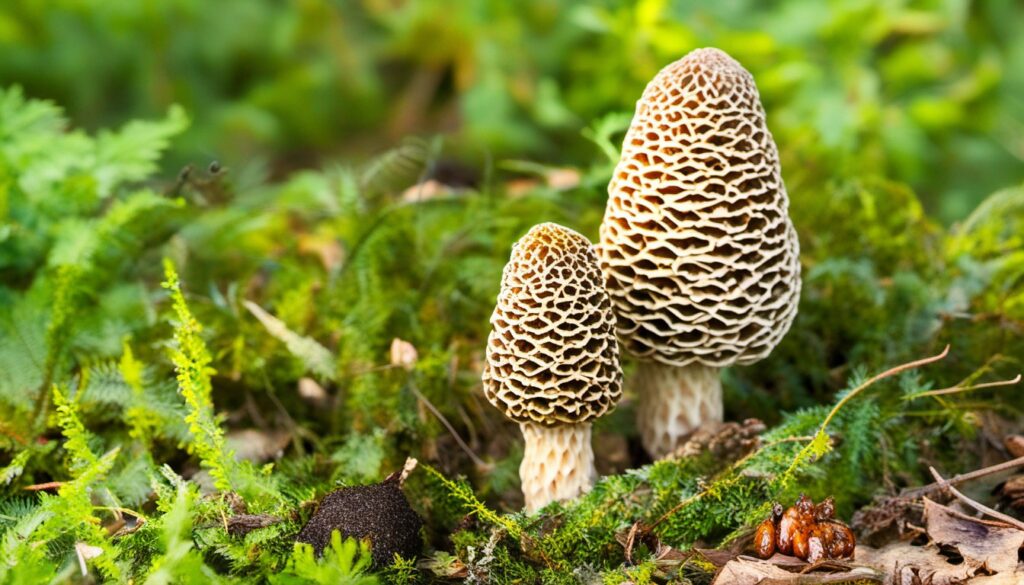Morel mushrooms in Louisiana are highly sought after by foragers due to their unique flavor and culinary value. If you’re planning to embark on a foraging adventure for these prized fungi, there are a few tips that can help ensure your success. From timing your hunt to understanding the ideal habitats, this article provides expert advice and guidance for a fruitful foraging experience. Discover the best spots in Louisiana, learn how to identify morel mushrooms, and explore delicious recipes that showcase their earthy and nutty flavors. Let your passion for foraging and love for these elusive mushrooms guide you on a memorable culinary journey through the Louisiana wilderness.
When to Forage for Morel Mushrooms
Understanding the Morel mushroom’s seasonal arrival in Louisiana is essential to fruitful foraging. Spurred by the warmth of the spring sun, Morels begin to surface during late March, reaching their zenith around mid-April.
The success of Morel mushroom foraging in Louisiana depends on aligning the expedition with its peak season in the moist, cooler conditions of spring.
Synchronizing your foraging expedition with the Morel’s peak season can amplify your success. Monitor local temperature and rainfall trends closely as Morels favor the cooler, moist conditions of spring in Louisiana.
Spring is the Ideal Season
Morel mushrooms typically flourish during springtime due to the ideal soil temperature and moisture conditions. Moreover, the growth of these mushrooms is catalyzed post winter with the development of new plant and tree life, thus increasing the possible areas where they can be found.
To make the most of your morel mushroom hunt during the spring, plan ahead and closely monitor the weather conditions. Optimal conditions for morels include warm, not cold, spring rains followed by warm, sunny days. This triggers morel growth and increases your chance of a successful foraging experience.
Weather Conditions to Look For
In the pursuit of morel mushrooms, weather plays an instrumental role. Morels typically thrive in moist conditions following spring rains, coupled with sunny days and nightly temperatures no less than 40°F. These mushrooms make their grand appearance when springtime reaches full swing, displaying keen understanding of their surrounding environment.
Pivotal to the morel lifecycle is the ground temperature, particularly the top two inches of soil. When it hits the sweet spot between 50°F and 55°F, it sends an irresistible invite to morels to emerge. A soil thermometer can be a valuable tool for this.
Regular monitoring of local weather forecasts can help optimize your morel hunting trips. If you’ve had a few rainy days with temperatures hovering around the mid-50s, followed by a sudden warm spell, make a beeline to your foraging spots. Such conditions often herald a morel bloom.
Equally important to acknowledging morel-loving weather is understanding its fickleness. If conditions change abruptly and dramatically with a spell of frosty temperatures or drought, it can take a toll on morel growth. Resilient as they may be, morels prefer consistency and stability.
Remember, timing is all-important. Be vigilant of weather forecasts following the end of winter into early spring. The transition of the freeze-thaw cycles is when morel spores begin to fruit. The weeks that follow the first hint of spring are often the most fruitful for morel foragers.
Identifying Morel Mushrooms

Recognizing Morels in Louisiana involves key identifying features. These include a honeycombed cap, an attached stem, and white to pale yellow tones. Also, these mushrooms have a unique scent, often compared to an earthy or nutty fragrance.
To differentiate Morels from other wild mushrooms, particularly the dangerous false morels, keen observation is required. False Morels lack the honeycombed pattern, have a darker color, and their caps are often wrinkled rather than pitted, making accurate identification crucial for safe foraging.
Key Features of Morels
One key identifier of the morel mushroom is its honeycomb-like structure, filled with deep pits and ridges. These features should be noted, particularly as they distinctly set them apart from their look-alikes.
In terms of color, morels can be a range of hues, including beige, grey, tan, or brown. Remember that legitimate morels have a continuous, mesh-like surface that envelops the entire mushroom crown.
When viewing the morel mushroom from the side, you’ll notice that it appears conical or egg-shaped. The cap and stem are usually fused together, giving the morel a single, uniform structure.
It’s also important to note that genuine morel mushrooms are completely hollow when cut in half lengthwise. This is a crucial distinguishing feature to ensure safe foraging, as some toxic varieties may falsely appear similar.
Common Look-alikes to Avoid
Mistaking morels for toxic counterparts, particularly the ‘false morel’, can lead to severe consequences. Caution is advised while foraging to avoid possible health risks.
The ingestion of false morels can cause serious symptoms such as nausea, abdominal pain, or even more severe conditions like rhabdomyolysis. Accurate identification is thus vital for safe consumption.
Moreover, the similarity of false morels to the true ones makes them particularly dangerous. Ensure to understand their distinctive features well before embarking on a foraging journey. Regrettably, inexperienced foragers often make this grave mistake.
Finding Morel Mushroom Locations
In the pursuit of bountiful morel harvests, understanding the varied Louisiana landscape is pivotal. Forested areas with elm, poplar, beech, and ash trees, often near decaying wood or burned areas, are prime spots for these elusive fungi.
Modern technology augments traditional foraging methods. Use mapping tools and apps specifically designed for mushroom foragers to document spots where morels have been previously found. This strategic approach effectively focuses your search and optimizes your harvest efforts.
Best Places in Louisiana
Louisiana, renowned for its diverse ecosystem, comes alive with Morel mushrooms in numerous areas. This fungal delicacy thrives across the state and increases the appeal of forays into certain localities.
- Exploring Morel Rich Regions: Kisatchie National Forest, known for its vast territory and diverse woodland environments, often reveals plentiful Morel caches.
- Experience the Louisiana bayous, as they often harbor lush Morel growth due to their high water content and shaded regions.
- Unveiling Hidden Gems: Lesser-known locations such as Jackson Bienville Wildlife Area and Tunica Hills Wildlife Management Area are sometimes overlooked, yet they can yield bountiful Morel mushrooms.
Habitat Preferences
Morels show a distinct preference for specific environmental conditions and are often found in association with particular types of soil and plants. This crucial insight can guide seasoned and novice foragers to more lucrative mushroom hunting grounds.
- Consider soils rich in limestone or gypsum for hunting morels.
- Prime locations often include the vicinity of trees such as ash, elm, oak, and apple.
- Morels also favor disturbed areas such as woods recently hit by fires, old orchards, or lumbered areas.
- They have been spotted thriving near dying or dead trees as well.
- Pay attention to moisture levels; morels prefer soil that’s moist but not waterlogged.
Tips for Successful Morel Mushroom Foraging

In mastering the art of morel foraging, equip yourself with the right essentials. A sharp knife for clean cuts, a sturdy mesh bag for air circulation ensuring spore drop-off for future growth, and a reliable topographic map for terrain navigation are non-negotiable.
When harvesting morels, embrace sustainable techniques. A gentle twist and pull will generally work, but remember to avoid the root system for sustainability. Not all visible treasures should be taken as the rule of leaving small morels gives way to a more fruitful harvest in years to come.
Bring the Right Tools and Supplies
Irrespective of your experience level, certain tools are essential for a productive foraging expedition. A basic morel collection kit should include a knife to cut your finds, a mesh bag for better ventilation, a GPS device or app to mark your fertile grounds and a field guide to assist in identifying morels correctly.
Each tool in your kit serves a distinct purpose. The knife ensures you don’t damage the mycelium when harvesting the mushroom. The mesh bag not only holds your morels but also allows their spores to fall and scatter as you walk, promoting future growth. A GPS device helps you remember fruitful spots, and a field guide is your best friend in differentiating genuine morels from look-alikes.
Stay Safe and Be Aware of Your Surroundings
Investing in solid boots and long clothes is critical when journeying into the wilderness for morel mushroom hunting. Ensure to bring a compass, map, and first-aid kit. Always alert someone of your plans before you head out—heeding safety measures is a must for a risk-free hunt in Louisiana.
High attention to detail becomes crucial while morel hunting. Pay close attention to environmental changes, listen for the rustling of small animals, and keep an eye out for distinct decaying wood—which often attracts morels. Your senses will become the indispensable allies in successful morel foraging.
Avoid foraging in areas exposed to pollutants, pesticides, or poisonous plants. Morels have a knack for absorbing harmful substances. Not only can it affect their taste, but they can potentially concentrate toxins, making them unsafe to eat. Your safety goes hand-in-hand with your awareness.
Harvesting and Handling Morels with Care
Picking morels in a mindful way ensures future generations can enjoy this foraging tradition. To minimize environmental impact, avoid raking or digging, which can harm fungi and disrupt natural habitats.
Adhere strictly to the ‘leave no trace’ ethos. Stick to paths, don’t uproot vegetation or break branches. You’re not merely gathering morels but respecting the magic of these woods.
Know the do’s and don’ts of responsible foraging. Do: Harvest mature morels, leaving smaller ones to spore. Don’t: Overharvest, limit your pickings to ensure the population’s continued growth.
Handle morels with care – they’re delicate. Cut morels at the base using a sharp knife, avoiding the root system. This prevention of root disturbance encourages a prosperous return.
Transport morels mindfully. Using breathable containers such as mesh bags can help scatter spores whilst you walk, aiding in the propagation of these elusive fungi.
Preparing and Cooking Morel Mushrooms

Unraveling the delicious potential of Morel mushrooms unveils a culinary delight, their rich, smoky flavor providing an exceptional addition to any dish. Harnessing Louisiana’s gastronomic charm, these unique fungi can be sautéed in butter, incorporated into creamy pasta or stuffed with your choice of filling, creating an authentic Cajun specialty.
Cleaning and Removing Grit
Morel Cleaning 101 starts with a simple rule: never submerge them in water. Soaking morels will allow them to take on a gritty texture due to dirt and sand particles being pulled into their porous structure. Instead, use a soft brush to clean the surface gently.
Morels can be particularly gritty if harvested from sandy Louisiana soil. Running them under a light stream of water after brushing can remove additional dirt. Take care not to oversoak or the mushrooms will lose their unique flavor.
A reliable method to remove stubborn grit involves using a paring knife to scrape off any visible soil. After that, a damp paper towel can help collect fine particles. Remember, retaining the taste and texture of morels is key, so patience and precision during cleaning are essential.
Delicious Morel Mushroom Recipes
Morel mushrooms, with their earthy and nutty flavor, lend themselves beautifully to a myriad of Louisiana classic and gourmet recipes, providing a unique twist to your culinary adventures.
- In Morel Cuisine Classics, think of reimagining your Creole dishes with morels, such as Morel Jambalaya and Morel Gumbo.
- Enjoy a Southern Morel Gravy served over fresh biscuits, traditional yet tantalizing.
- An elegant choice for Gourmet recipes could be Morel Mushroom Risotto, adds a touch of refinement to your dinner parties.
- Try Morels in Cream Sauce served over fresh pasta, extravagantly comforting.
- Consider Morel-Stuffed Quail for an exquisite main dish.
Preserving Morel Mushrooms for Later Use
For a lasting supply of Morel Mushrooms from Louisiana forests to your kitchen, consider preservation methods. These remarkable fungi can be dried or frozen, thereby prolonging their availability year-round.
Drying Morel Mushrooms
Drying morels not only enhances their flavors but also extends their shelf life. Begin the process by thoroughly washing the mushrooms to remove any debris. Next, slice them crossways to enhance air circulation during the drying process. Arrange the slices on a rack and heat them at approximately 125 degrees Fahrenheit until they are completely dehydrated.
To prolong the enjoyment of your morel harvest, consider embracing the art of drying. The key is to be patient, as the drying process may take anywhere between 6-12 hours depending on the size and thickness of the slices. The fully-dried morels will decrease significantly in size and acquire a brittle texture.
Drying morels is a practical way to savor their unique flavor year-round. For home growers or avid foragers, a food dehydrator is a worthwhile investment. However, in its absence, an oven set at its lowest temperature, with the door slightly ajar for airflow, suffices.
Preserving morels by drying should result in a significantly extended shelf life, potentially up to a year. Store the dried morels in airtight containers away from light and moisture. They can be rehydrated in liquid and used as an ingredient in a range of recipes, delivering a burst of umami flavor when required.
Freezing Morel Mushrooms
For cold storage, choose fresh Morel mushrooms for freezing. Clean thoroughly, pat dry, and arrange them on a baking sheet to freeze before transferring them into airtight freezer bags or containers. This pre-freezing step preserves their shape and texture.
With a supply of frozen Morel mushrooms, culinary versatility extends throughout the year. Therefore, incorporating brightly flavored, earthy mushrooms into your meals becomes a breeze—simply defrost the desired amount and use as directed by your recipe.
Frequently Asked Questions (FAQ) About Foraging Morel Mushrooms in Louisiana
What makes Morel mushrooms in Louisiana so special?
Morel mushrooms in Louisiana are highly prized for their unique flavor and culinary versatility, making them a sought-after delicacy among foragers and chefs alike.
When is the best time to forage for Morel mushrooms in Louisiana?
The peak season for Morel mushroom foraging in Louisiana typically occurs in the spring, usually around March to April, depending on weather conditions and soil temperature.
Where can I find Morel mushrooms in Louisiana?
Morel mushrooms in Louisiana are commonly found in areas with moist and sandy soils, such as riverbanks, floodplains, and forested areas, particularly near trees like oak, ash, elm, and cottonwood.
How do I identify Morel mushrooms in Louisiana?
Morel mushrooms in Louisiana have a distinctive cone-shaped cap with a honeycomb-like texture, ranging in color from pale yellow to dark brown. Their hollow stem is typically white or cream-colored.
Are Morel mushrooms in Louisiana safe to eat?
Yes, Morel mushrooms in Louisiana are safe to eat when properly identified and cooked thoroughly. It is essential to be cautious and consult with an experienced forager or mycologist to avoid any potential risks.
What are some popular culinary uses for Morel mushrooms in Louisiana?
Morel mushrooms in Louisiana are incredibly versatile and can be used in various culinary creations, including soups, stir-fries, sauces, and side dishes. They offer a unique earthy and nutty flavor that enhances a wide range of dishes.
How can I preserve Morel mushrooms in Louisiana for later use?
To preserve Morel mushrooms, you can dry them by placing them in a well-ventilated area or using a food dehydrator. Another option is to sauté them lightly in butter or oil and freeze them for later enjoyment.
Are there any regulations or permits required for foraging Morel mushrooms in Louisiana?
It is crucial to check local regulations and obtain any necessary permits or permissions before foraging for Morel mushrooms in Louisiana. Certain areas may have restrictions or require specific documentation for foraging activities.
Can I cultivate Morel mushrooms in Louisiana?
While it can be challenging to cultivate Morel mushrooms, some advanced foragers and mushroom enthusiasts have had success cultivating them using specific techniques, such as creating a suitable habitat and inoculating with Morel spores.
What are some common look-alike mushrooms I should be aware of when foraging Morel mushrooms in Louisiana?
When foraging for Morel mushrooms in Louisiana, it is essential to be cautious of false morels (Gyromitra species), which can be toxic if consumed. Familiarize yourself with the distinguishing features of true Morels to avoid any confusion.
What other resources can help me learn more about foraging Morel mushrooms in Louisiana?
In addition to this article, there are various books, online forums, and workshops available that can provide more in-depth knowledge and guidance on foraging Morel mushrooms in Louisiana. Consulting with experienced foragers or joining local mycology groups can also be invaluable resources.
Conclusion
Reflecting on the morel foraging journey, it is evident that from forest to feast, these exquisite fungi offer a culinary adventure unlike any to residents in Louisiana. In addition, it’s worth noting the significant contributions of morel foraging to Louisiana’s gastronomy.
- Morels’ unique flavor enhances local dishes.
- Foraging offers a sustainable source of this gourmet ingredient.
- Morels contribute to Louisiana’s culinary reputation.
- Foraging for morels encourages outdoor activities and connection with nature.

